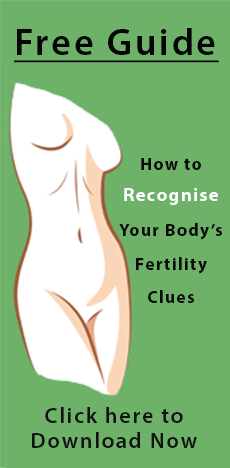The following dietary guidelines are ideal for continuing wellbeing for all women, but particularly for those who suffer from any menstrual problem including premenstrual syndrome (PMS), endometriosis and dysmenorrhoea, fibroids, cysts, PID and an irregular cycle.
An excerpt from The Wild Genie by Alexandra Pope

It’s important to remember that each person’s needs are unique. No one diet fits everyone, but there are some useful guidelines.
Many women ask me: “How long do I have to be on this diet?” This is like asking: “How long is a piece of string?” It’s a difficult question for me to answer, partly because I would never recommend going back to a poor nutrient deficient diet.
You may in the future be able to enjoy foods on the “to avoid” list, but they would be occasional rather than a regular feature of your diet. It also greatly depends on what your overall health is like. So how long you stay on the diet depends on each individual woman.
As a general guideline, you need to give yourself at least three months on your new diet to allow for any health changes. Give yourself longer, say five or six months, if you are a bit on again/off again with the diet.
No matter how small the changes you’ve made to your diet, you may have days when you can’t do it. This is perfectly normal, so don’t beat yourself up for eating inappropriate foods – enjoy eating them, and then continue again the next day with the healthier plan. Do it consciously, plan treats for yourself, rather than furtively react to that “damn diet”.
If life without chocolate, for instance, feels unbearable, treat yourself occasionally to a small amount of the best! Consider also buying organic chocolate with unrefined cane sugar – it’s delicious. My only word of caution: try not to break the health rules in the few days before and during your period.
Foods that promote health
Whole foods and minimally processed foods. Examples of whole foods are brown rice rather than white rice, brown flour rather than white flour. Minimally processed foods include tofu* and fermented foods such as miso and yoghurt.
Fresh food. I have a contract with myself not to eat food that’s more than a day old. For example, I might make enough dinner so there’s some left over for a lunch box the next day, but if I haven’t eaten it by then I throw it away. It’s important to avoid food that has gone mouldy, particularly if you have allergies. Remember to enjoy foods in season.
Organically and biodynamically produced food. Organically and biodynamically produced food is much tastier and contains more vitamins and minerals than conventionally produced food. Most importantly, it doesn’t contain the pesticides, chemical fertilisers, growth hormones, antibiotics and vaccines that regular fruit, vegetables, meat, eggs and dairy products contain. Avoid genetically engineered food at all times. Buying certified organic food is one way to ensure you’re not eating genetically engineered. food.
The greatest possible variety. You’re more likely to get the range of nutrients your body needs if you have a varied diet. You’re also less likely to develop an allergy which can occur if you repeatedly eat the same foods.
Vegetables. Most vegies are rich in vitamins and minerals. Particularly good ones for women with menstrual problems are root vegies and the green leafy varieties. Make fresh vegetables the mainstay of your diet.
Whole grains and whole grain cereal. These include brown rice, corn, oats, rye, millet, buckwheat, quinoa, amaranth and wheat. Wheat can worsen bloating and gas, a sign that you could be allergic to it. In your quest for menstrual health, I would even go so far as to say that wheat be one of the foods you consider giving up first.
Legumes. These include lentils, kidney beans, azuki beans, chick peas, haricot beans, lima beans, black-eyed beans, black beans, split peas.
Seeds and nuts. Avoid peanuts and peanut butter, as well as pistachios, as they usually contain mould. Unlike meat and fish, beans, nuts and seeds are not complete proteins. However, by coupling them with a grain, you have a complete protein. You don’t need to eat them in the same meal to get the benefit of the protein. It’s important to store nuts, seeds, and their spreads, in the refrigerator to prevent them from becoming rancid. Eat nuts and seeds within a few weeks of purchase and only buy from shops where there’s a high turnover of stock. Avoid stale nuts and seeds at all costs.
Fruits. Enjoy fruits that are seasonal. Fresh fruit is a good source of vitamins and fibre.
Oils. Use only cold-pressed, unrefined oils. Olive (virgin only) and sesame are the best for every day use. Avoid canola oil. Ideally buy oils in brown bottles, to minimise the deteriorating effects of light, and keep them in the refrigerator. Don’t even think about buying the de- odourised, sanitised (hydrogenated) versions you find in supermarkets. Hydrogenation creates an immune damaging fat so these oils have no goodness left in them and may even be bad for you.
Essential fatty acids (EFAs). Essential for good health, EFAs are particularly important for women with menstrual problems. We need them for the formation of the “friendly” prostaglandins that help to case cramping. Particularly rich sources of EFAs are flaxseed (linseed), evening primrose, raw goat’s milk and the oil in fatty fish. Enjoy freshly ground linseed sprinkled on you food as an economical and easy way to get these nutrients.
Tofu. Made from soy beans, tofu is a good protein source. Soy beans are a source of plant oestrogens which may help relieve PMS symptoms by competing with your own level of oestrogen when it’s too high. Tofu is not fermented, so if you have severe health problems or very poor digestion, avoid eating it.
Shoyu or tamari. These are fermented soya products made from water, salt and soya beans. Use as a salt substitute as it contains much less sodium.
Miso. A fermented soya bean paste, miso contains protein and helps fight fatigue. It’s a great aid to digestion – as long as you don’t boil the paste – and a good salt substitute.
Tempeh. An Indonesian food, tempeh is fermented soya beans (again!). It’s very nutritious and an excellent protein product. Although an acquired taste for some people it’s worthwhile learning some tasty recipes.
Seaweeds. A powerhouse of minerals, vitamins and amino acids, seaweeds are an excellent source of iodine, calcium and iron in an easily assimilated form. Never mind diamonds being a girl’s best friend, minerals are – seaweeds are a great way to ensure you get plenty of them! Seaweeds will help prevent damage to tissues from chemicals, heavy metals, and certain types of radioactivity; offset stress, boost stamina, and restore sexual interest (Weed,1989). Types of seaweed include nori, arame, kombu, wakame and Tasmanian float leaf. You can also buy kelp seaweed in tablet and powdered form, using the latter as a salt substitute if you wish.
Water. Essential for all chemical processes in your body, water also helps memory and flushes toxins from the body. I suspect that premenstrual headaches have a lot to do with dehydration. Start drinking more water from today, particularly in hot weather or if you exercise heavily. Because of the many chemicals used in our water supply, a water filter is essential. A reverse osmosis filter system is the best, but initially buy whatever you can afford. Or buy bottled water in clear plastic or glass bottles only.
For more info on The Wild Genie
*Tofu – Since this article was written, there’s a great deal of conflicting advice about tofu and other soy products plus the rise of GMO foods. Do your research to decide which food is good for your body and health.



